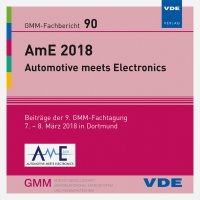On the way to Automated Driving – an OEM perspective
Konferenz: AmE 2018 – Automotive meets Electronics - 9. GMM-Fachtagung
07.03.2018 - 08.03.2018 in Dortmund, Deutschland
Tagungsband: AmE 2018 – Automotive meets Electronics
Seiten: 4Sprache: EnglischTyp: PDF
Persönliche VDE-Mitglieder erhalten auf diesen Artikel 10% Rabatt
Autoren:
Ress, Christian (Ford Research & Advanced Engineering, Aachen, Germany)
Inhalt:
Nowadays and future personal mobility challenges the Automotive Industry and thus all vehicle manufacturers. For example, people living in mega cities might no longer be interested in owning a vehicle but demanding personal transportation. In order to meet these demands and to smooth the increasing amount of traffic, Driver Assist Technologies (DAT) become more and more important. Future intelligent vehicles are expected to support the driver with DAT features and even to take over the driving task in defined situations. The SAE International six levels of automation rating system is used to classify a vehicle’s automation capabilities. The system starts at Level 0 – No Automation – which is defined as a vehicle that requires a human driver for all aspects of the driving task, and goes up to Level 5 – Full Automation – in which a vehicle can perform all driving tasks, no matter the environmental or roadway conditions. This paper outlines the demands for future mobility and Ford’s answer offering smart vehicles in a smart world. Ford already provides a wide range of DAT systems in its vehicles, even in the small car segment, e.g. the Fiesta. The following chapters introduce future DAT systems as well as connected vehicle technology to further support the driver. As a next evolutionary step, Ford’s global efforts on the way to automated driving are presented.


